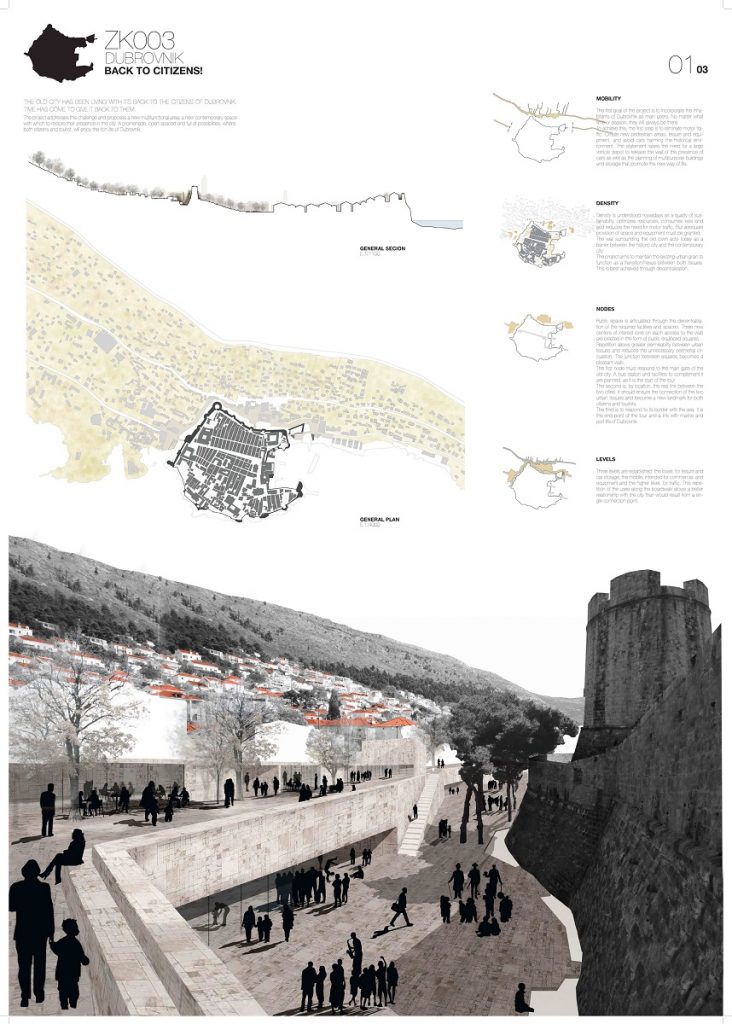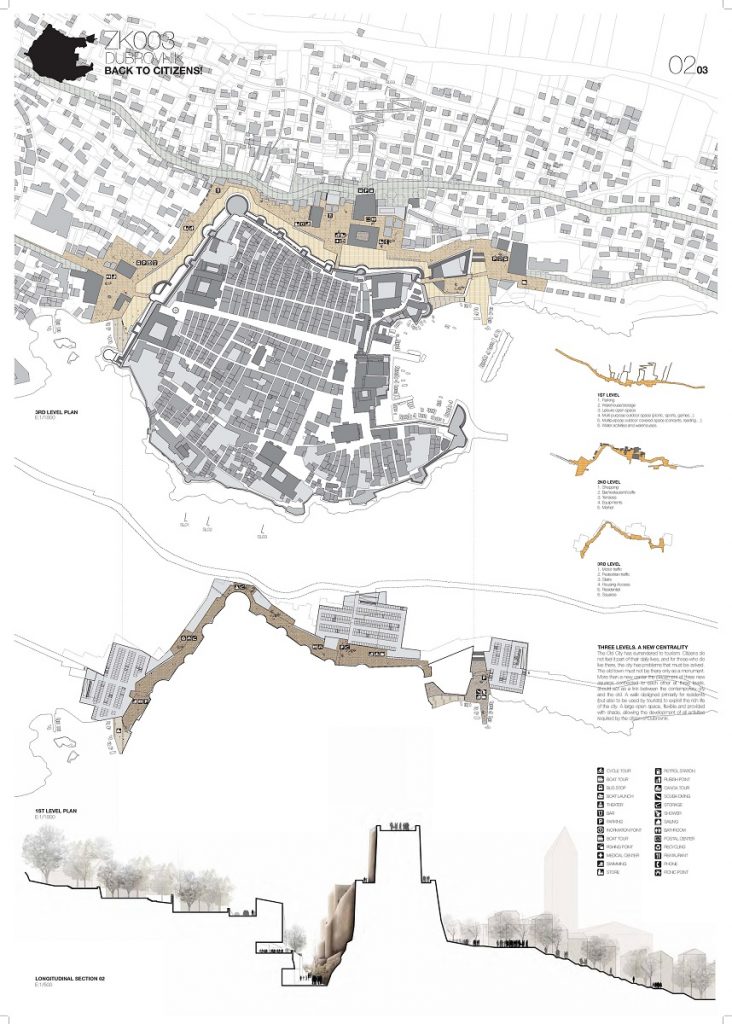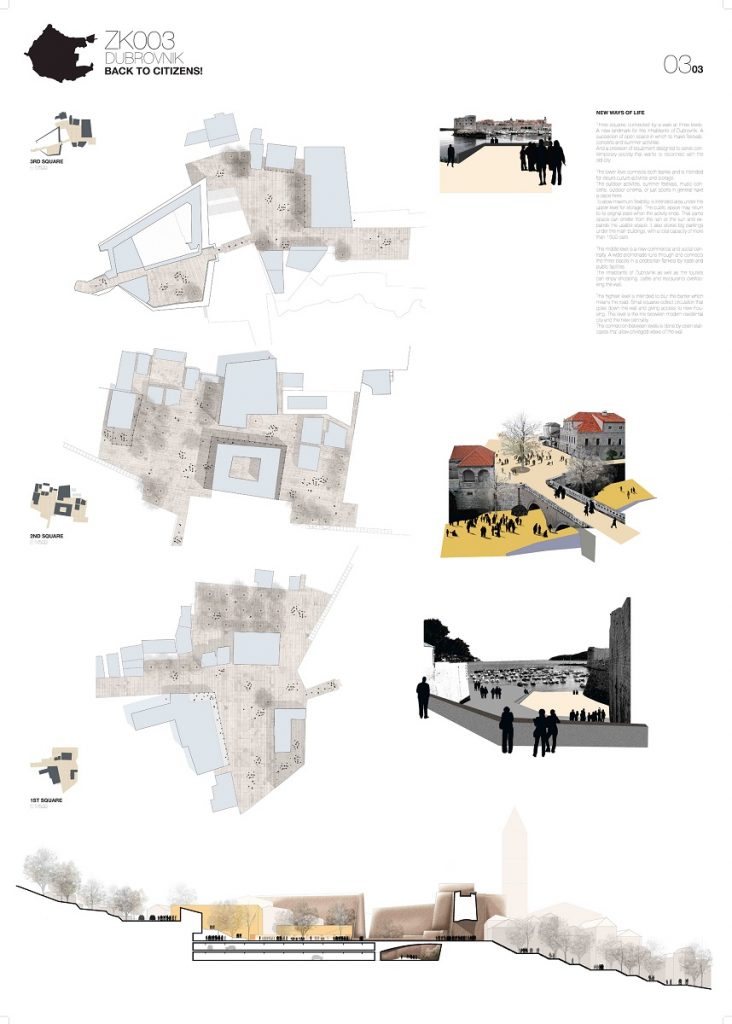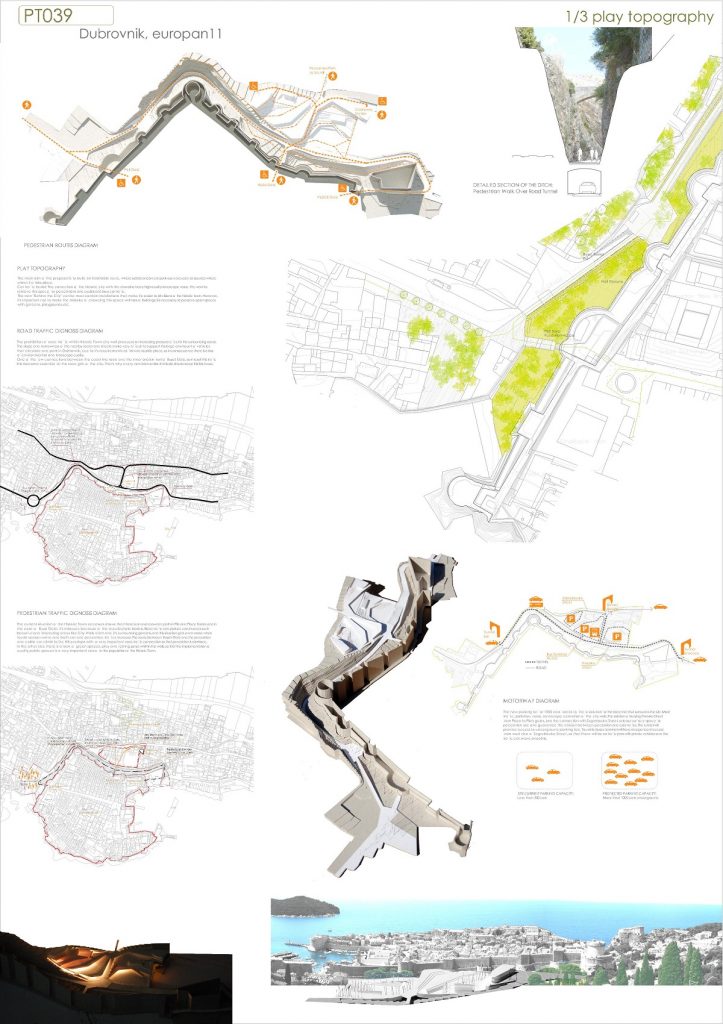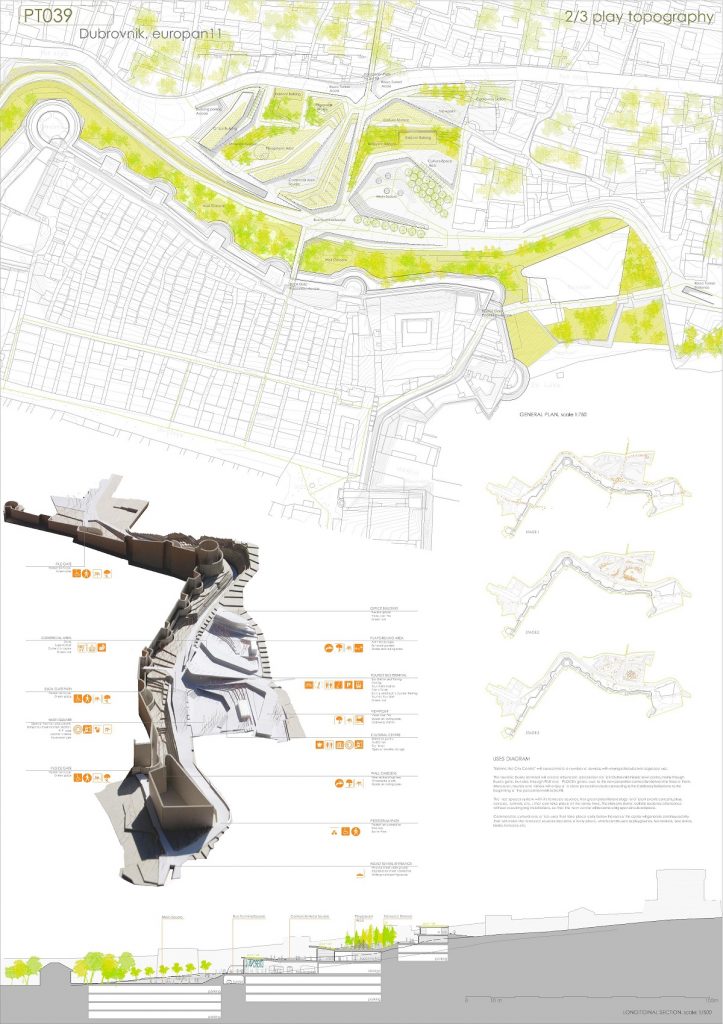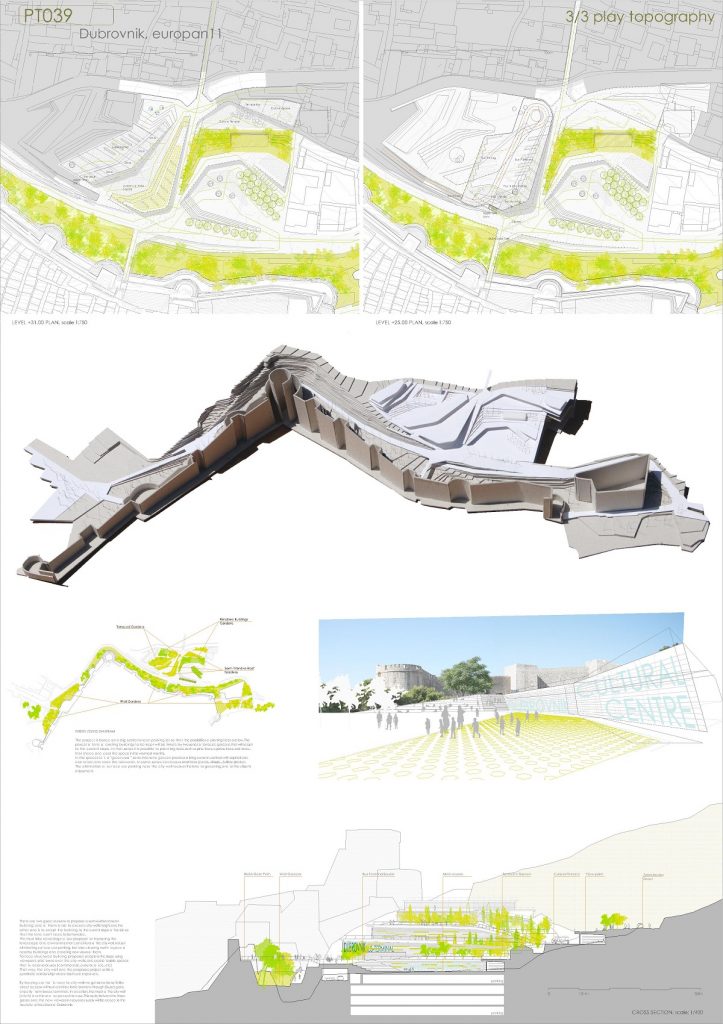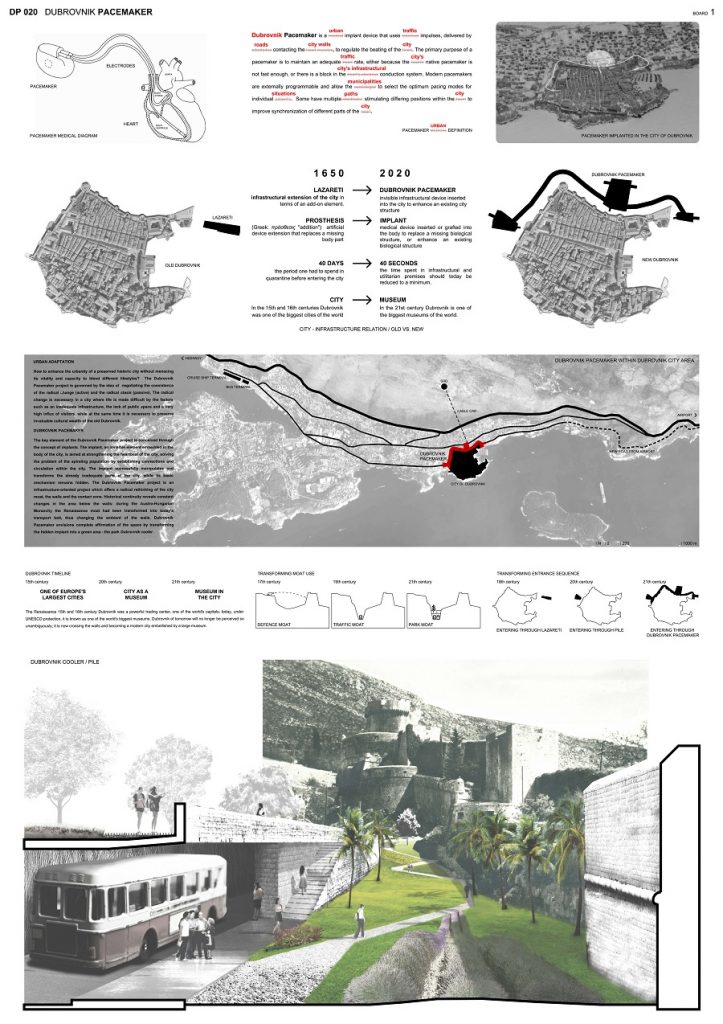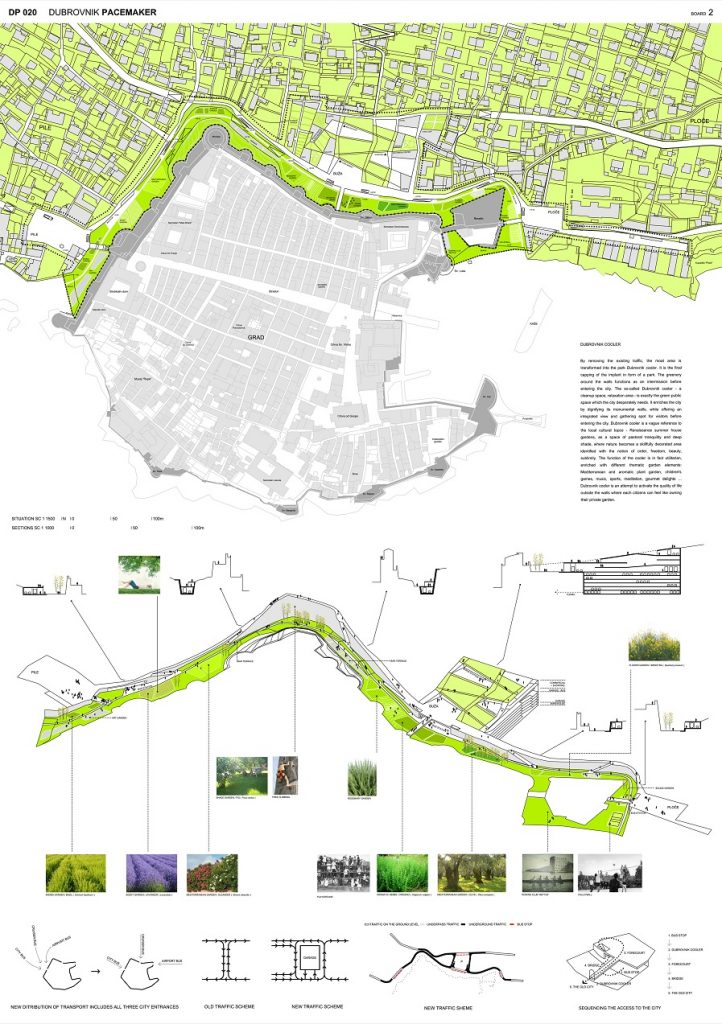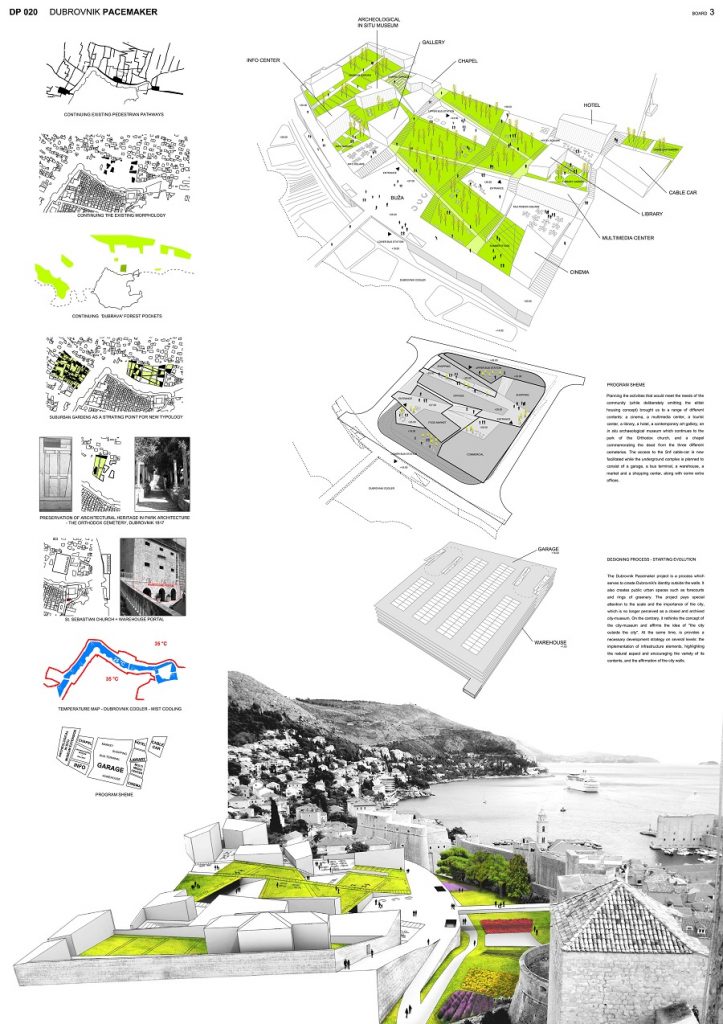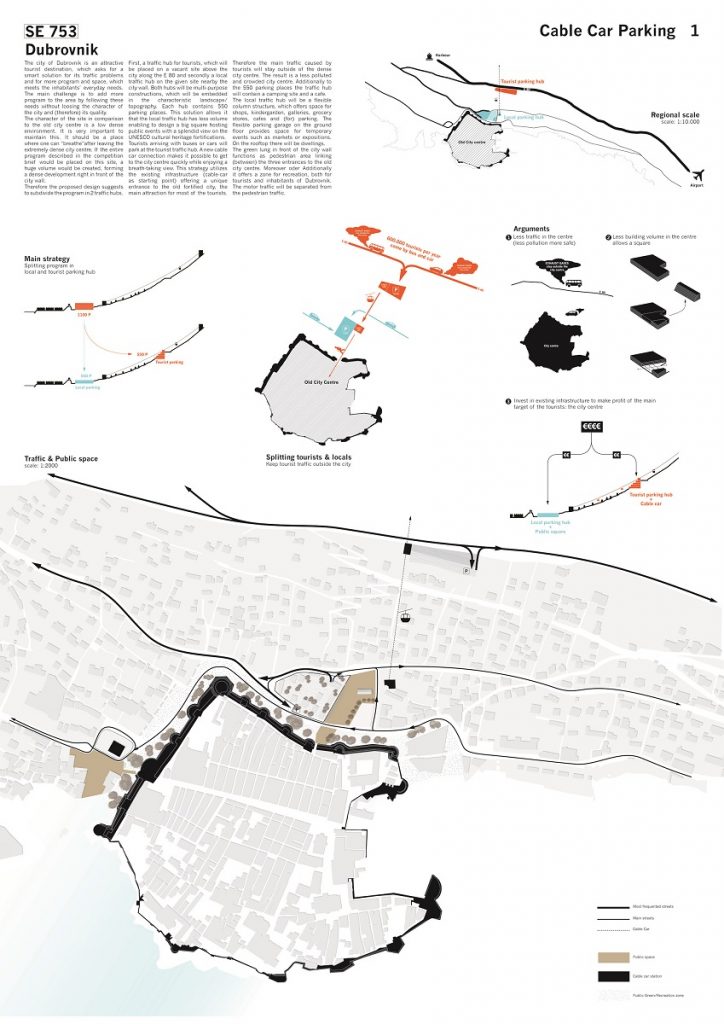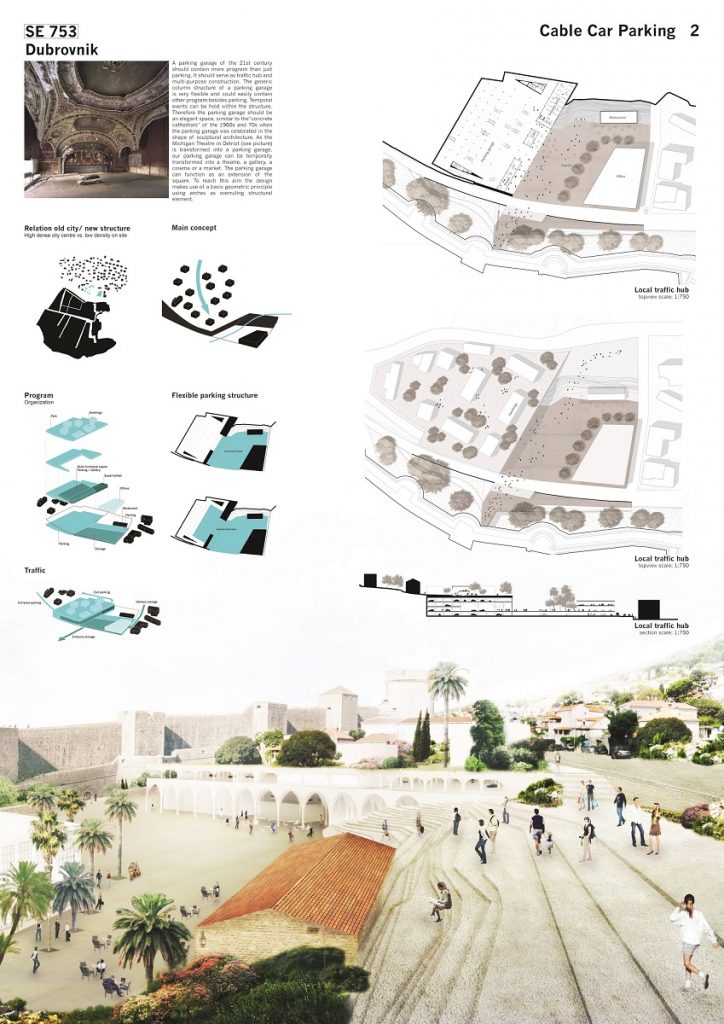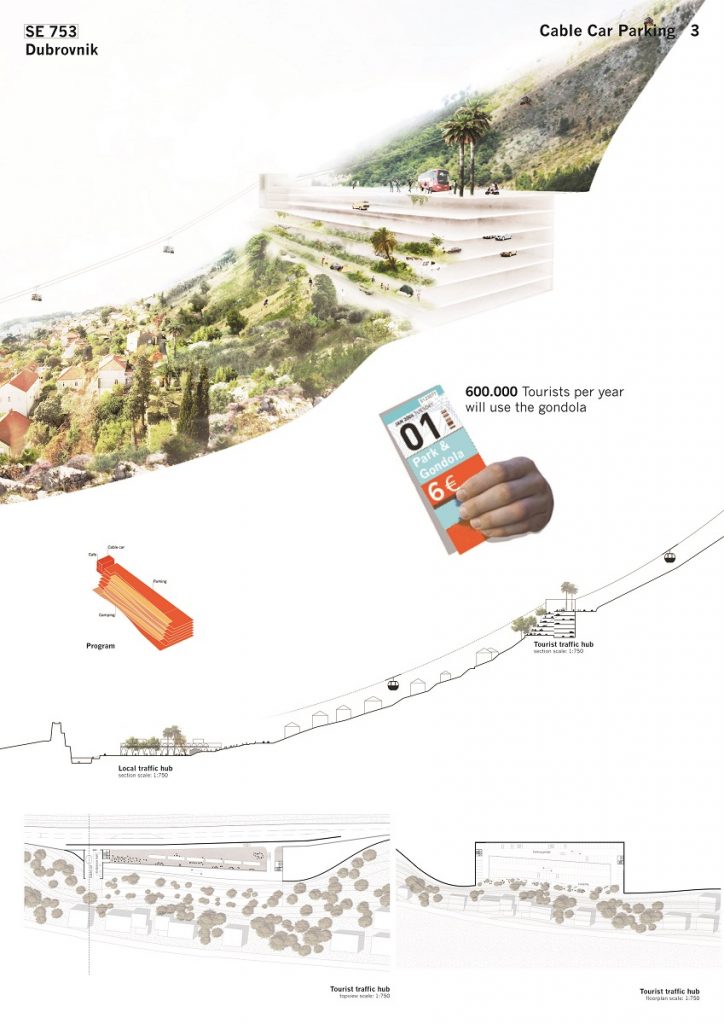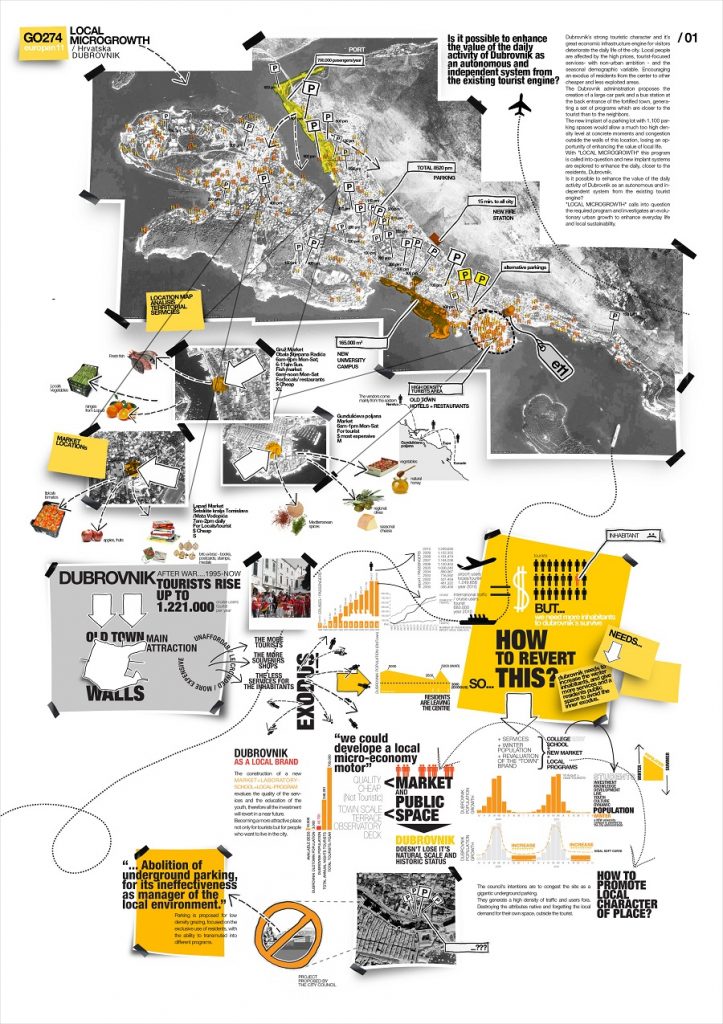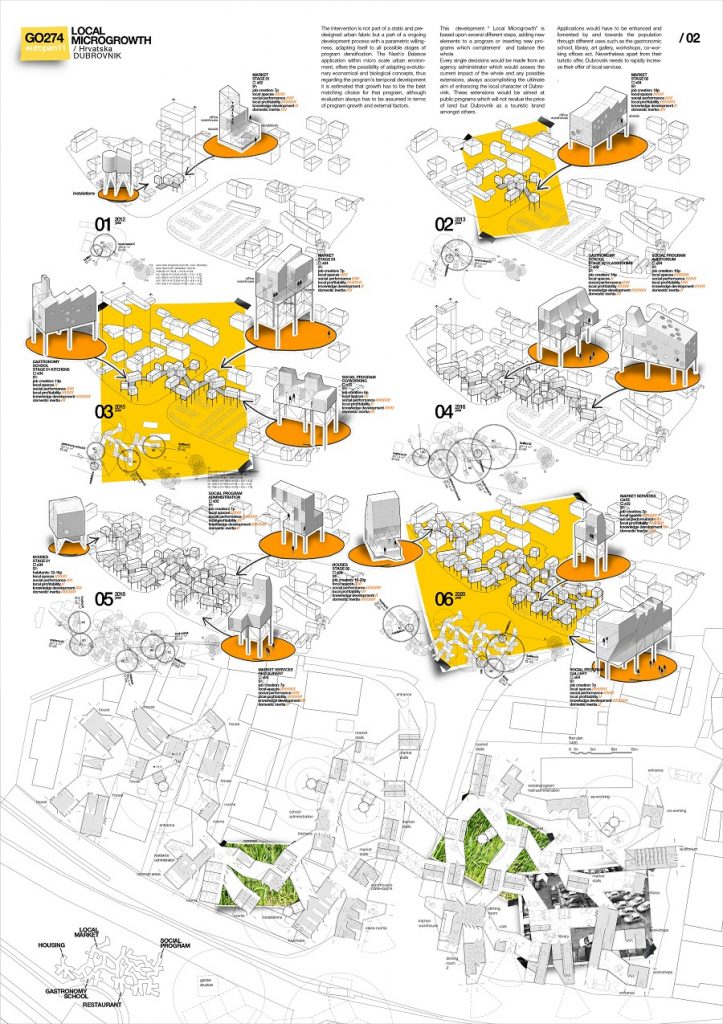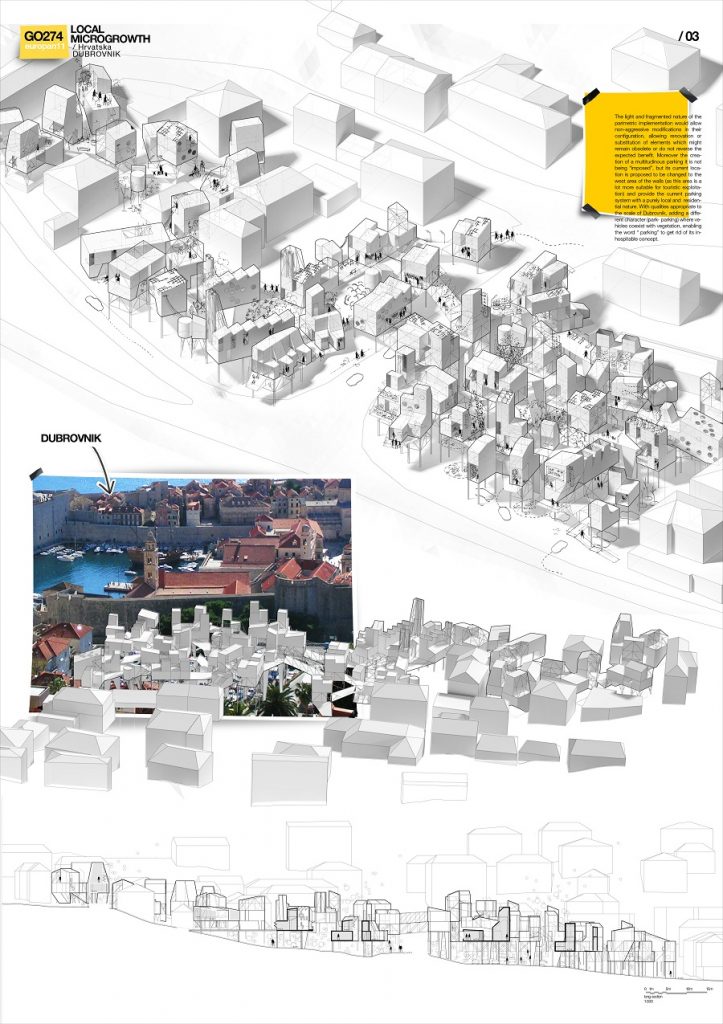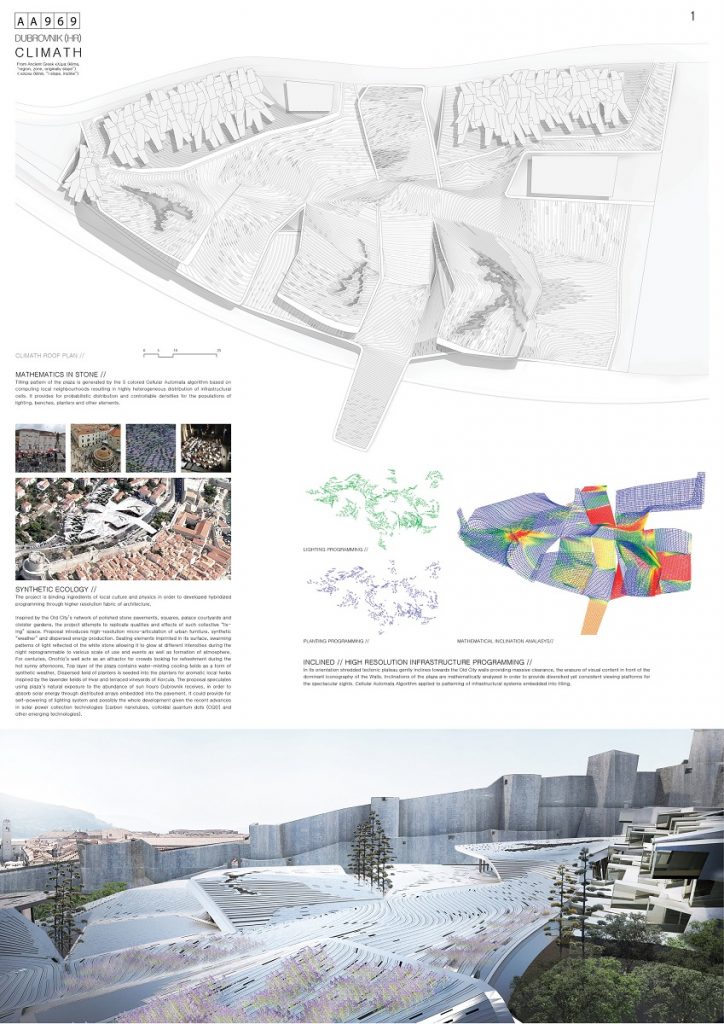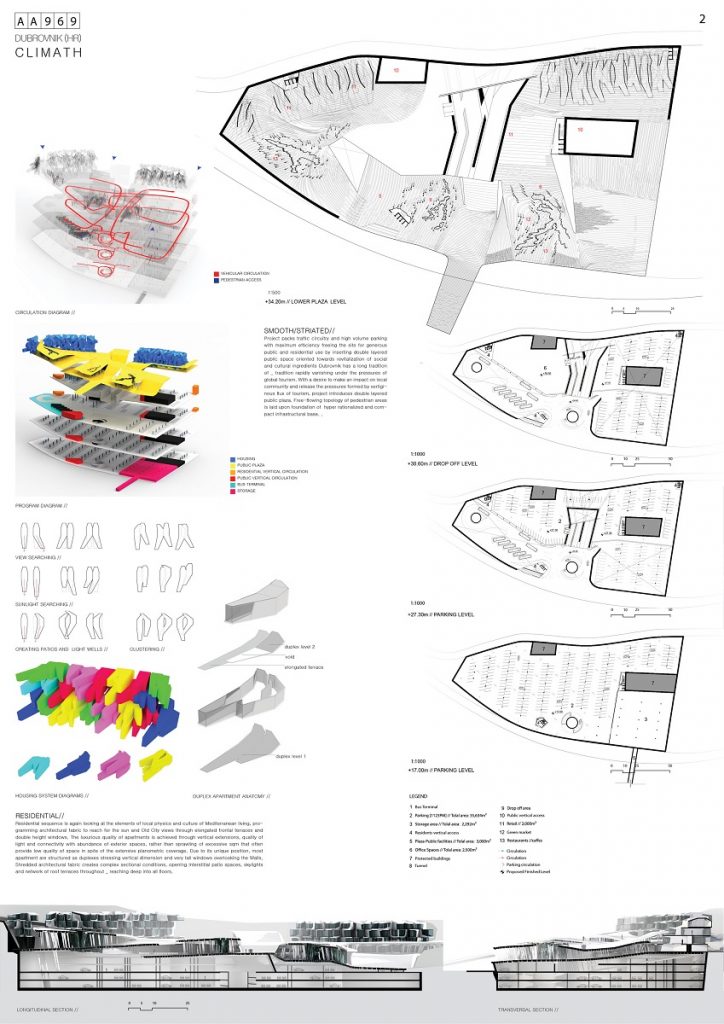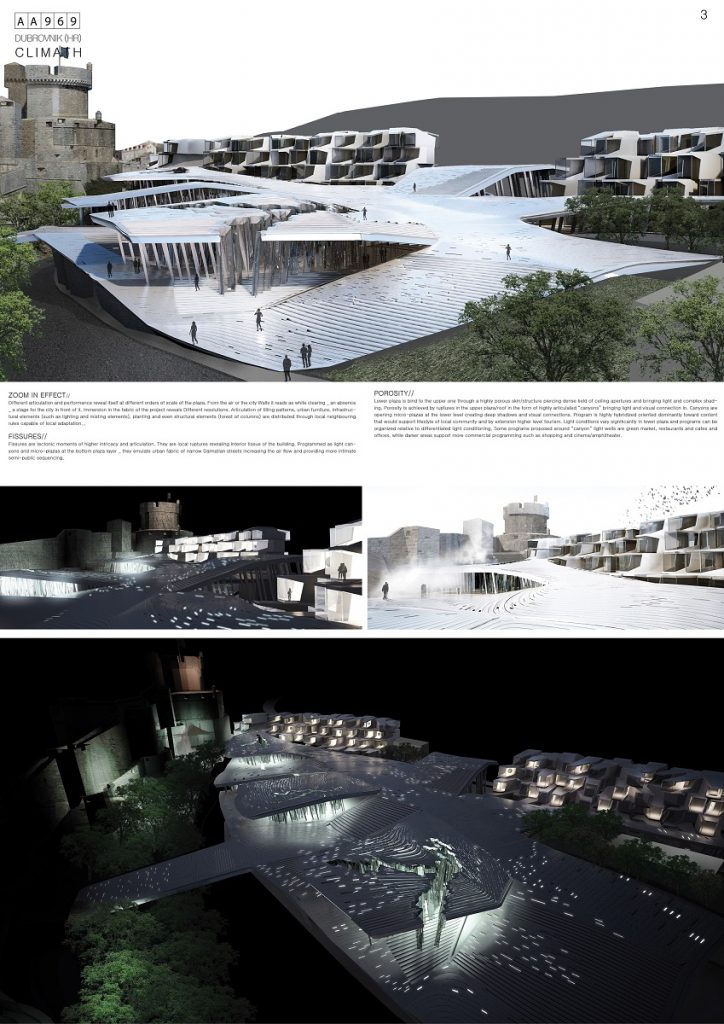Europan 11
EUROPAN 11 TOPIC
The Europan 11 competition is taking place in conditions marked by a strong commitment amongst European cities to very stringent environmental objectives. Following the Copenhagen climate change summit in 2009, municipalities became aware of the importance of what they do alongside central government to limit greenhouse gas emissions, control energy consumption and manage (or preserve) rare and non renewable resources such as water, as well as to diminish pollution of different kinds. As a general rule, they are trying to achieve greater autonomy, in both food and energy, and want to develop societal innovations in order to encourage every citizen to adopt an eco-responsible lifestyle. These geopolitical concerns need to be reflected in the design of urban spaces at the urban and architectural scale.
THE OBJECTIVE: URBAN ADAPTATION
Good-quality planning with a focus on sustainability should generate an evolution in its environmental and human components that is consistent on all scales. It has become a strategic factor, since it can enhance the economic, social and cultural attractiveness of a region, city or locality, and also boost local identity
THE CHALLENGE: TO COMBINE URBAN AND NATURAL FABRIC
For a municipality, the quest for sustainability entails the production of areas that bring quality of life to everybody, in other words the reappropriation of public space and ease of access to amenities and services.
A sustainable approach also involves tackling the question of nature. Whether developed, wild or in the form of local agriculture, nature needs to be reconciled with the urban fabric in order to enhance the territories of the city and protect resources, biodiversity and the urban future.
THE PRIORITIES: DENSIFICATION, ACCESSIBILITY AND CONNECTION
A city or conurbation that is seeking to achieve a degree of sustainability must moderate its horizontal expansion in order to limit its consumption of unbuilt land and thereby prevent urban sprawl. Sometimes it may even need to recycle or reduce its built-up areas, and reorder its existing fabric. In any case, thinking about the future requires the development of a prospective approach to the identification of local specificities.
The sharing of created spaces and access to the different municipal services promotes social relations between citizens. Whatever their scale, areas interact and it is essential to develop these connections and interdependencies in systems that extend from the local to the global. These connections must also allow access to knowledge and the confrontation of ideas.
THE REQUIREMENT: TO DESIGN URBAN PROCESSES WITH THE CAPACITY TO EVOLVE
For this purpose, Europan 11 entrants will need to propose an environmental development strategy and projects that have the potential to evolve and take account of the specific identity of the different locations. Project designs will also need to include a method of achieving development that is appropriate to the scale of the site, despite the unknowns that may arise with the passing of time. To fulfil this goal, the architect will need to bring together multiple skills (planning, landscape, environmental, economic, etc.). Only a synergy between different approaches will meet the challenge.

Behind the city
BEHIND THE CITY SITE
The “Behind the city” site is placed next to the historical city walls, on the North, by the newest city gate, Buža (opening). Today, the state of the area and its use are in disproportion to its location, so it should be planned according to its position and the needs of the city. This area can be regarded and designed as an entrance to the city. The city of Dubrovnik is an attractive tourist destination, yet a place where its inhabitants must meet their everyday needs to prevent their emigration to cheaper and less crowded towns, and to maintain life in the city beyond the tourist season. The green belt encircling the city walls must be preserved; today it is used as a parking lot. The green area by the walls can be turned into a pedestrian link between the three city gates (Pile, Ploče, Buža). Functionally, the “Behind the city” area is a traffic terminal.
The area surrounding the old city can be divided into two entities: the coast area, linked to the city and dominated by tourist facilities, and mainly residential area in the hinterland. The central point of the coastal area is the city, entered through three gates: Pile, Ploče and Buža. The northern gate, Buža, is least frequently used and equipped. Good planning of this area and construction of the underground parking garage will activate this gate, lessening the pressure on the other two. A pedestrian link should be planned between the three gates. The Buža gate is close to the bottom station of the cableway leading to the top of the Srđ hill. The cableway can transport cca 500 people per hour, so although th cableway station is outside the project area, it influences the site and should be considered in the designing phase
A parking lot that can accomodate 124 cars is on the eastern part of the project site, as well as 4 residential buildings containing 10 appartments and 3 auxilliary buildings. The western part of the site is occupied by 7 family houses and one redidential building with 6 appartments, and a couple of villas with gardens are on the westernmost part. The terrain is steep. This area has allways been occupied by gardens, as part of the green belt surrounding the city walls.
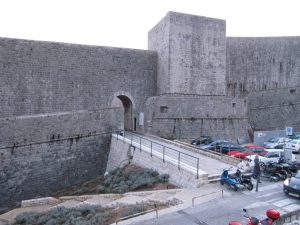
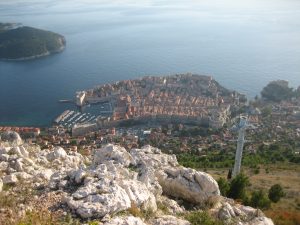
JURY MEMBERS
Krunoslav Šmit Architect, PhD, Zagreb
Davor Bušnja Architect, Dubrovnik
Saša Bradić Architect, Vienna
Saša Begović Architect, 3LHD, Zagreb
Marina Viculin Art historian, curator in Klovićevi dvori art gallery, Zagreb
Slobodan Prosperov Novak Writer and literature historian, Zagreb
Carme Pinos Architect, Barcelona
Marianne Saetre Architect, Snohetta, Oslo
Ivana Sršen Architect, Bruxelles
SUBSTITUTES
Vanja Ilić Architect, Zagreb
Dinko Peračić Architect, Split
1st prize
ZK033 „BACK TO CITIZENS“
Author(s): Jaime Font Furest, Architect, Spain
Associates(s): Marcos Parera Blanch, Architecture student, Spain; Espinet Roma Jordi, Architecture student, Spain; Parçet Comas Jordi, Architecture student, Spain
2nd prize
PT 039 „PLAY TOPOGRAPHY“
Author(s): Antonio Bravo Rincón, Architect, Spain; Maria Carmen Ruiz Ibañez, Architect, Spain
Associates(s): Salvador Aparicio Massó, Architect, Spain; Claudia Caballero Moya, Architecture student, Spain
Honorable mention
DP 020 „DUBROVNIK PACEMAKER“
Author(s): Josip Mičetić, Architect, Croatia; Roman Miro, Architect, Croatia; Luka Vlahović, Artist, Croatia
Associates(s): Iva Baljkas, Architect, Croatia; Luka Franješević, Artist, Croatia; Nikša Laušin, Artist, Croatia; Petra Tomljanović, Art historian, Croatia
SE 753 „CABLE CAR PARKING“
Author(s): Sascha Glasl, Architect, Germany; Tjeerd Haccou, Architect, The Netherlands; Marhijn Pool, Architect, The Netherlands
Associates(s): Eva Sollgruber, Architect, Austria; Marina Vendrell Carbonell, Architect, Spain
GO274 „LOCAL MICROGROWTH“
Author(s): Gonzalo dal Val, Architect, Spain; Gonzalo Gutierrez, Architect, Spain
Associates(s):
AA969 „CLIMATH“
Author(s): Lianou Anastasia, Architect, Greece; Alisa Andrašek, Architect, Croatia; Igor Pantić, Architect, Serbia; Ermis Chalvatzis, Architect, Greece
Associates(s): Jose Sanchez, Architect, Spain; Karoly Markos, Architecture student, Romania
